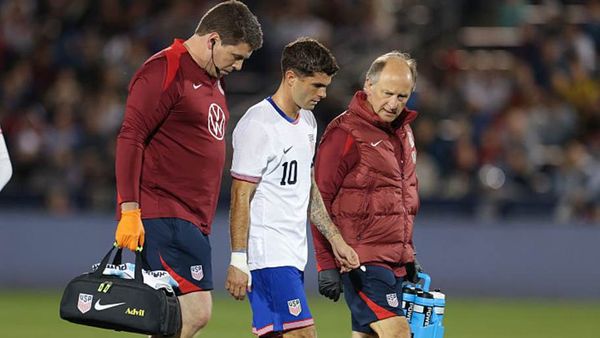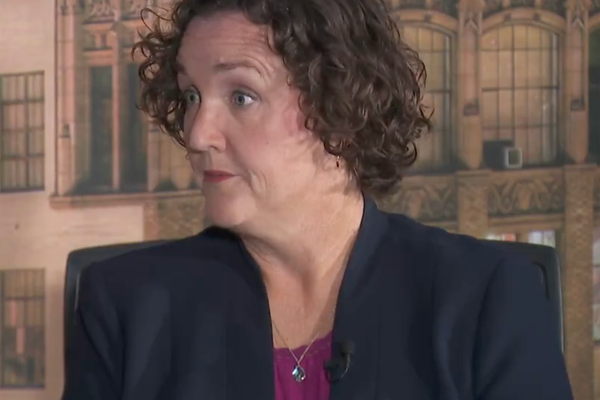/https://static.texastribune.org/media/files/786f0896167eafde800ced80d2ddecfd/West%20Texas%20Water%20JR%20TT%2023.jpg)
Texas lawmakers agreed on a plan to spend a billion dollars on new water projects and repair aging infrastructure to fortify Texas against droughts and keep up with a growing population that has strained the state’s water supplies.
Texas Senate and House negotiators finalized language for Senate Bill 28 and Senate Joint Resolution 75 late Saturday night. Together, the bills would earmark $1 billion to upgrade Texas’ failing water infrastructure and jumpstart massive water supply projects, from marine desalination to treating “produced water” — water that comes up from the ground during the oil fracking process.
“The truth of the matter is, under today’s growth and going forward, we don’t have enough [water],” state Sen. Charles Perry, who has spearheaded water policy, told senators during a budget debate Friday. The money for the water plan will be allocated only if the legislation takes effect.
Perry, R-Lubbock, warned senators that the need is probably far larger than $1 billion: Between fixing water infrastructure and increasing the state’s water supply, he said, “it’s probably a $500 billion price tag.”
“We, as a state, have started down the right path, but I want to remind everybody, it’s a path that has no end,” Perry said. “Our water resources are stretched and will continue to be stretched.”
Senate Bill 28 was approved by the full House in a 134-4 vote and in a unanimous Senate vote on Sunday. The bill now heads to Gov. Greg Abbott’s desk. If the bill and SJR 75 clear the governor’s office, the plan will be put before voters in the fall.
As part of an agreement on how to spend part of the state’s historic $32.7 billion cash surplus, lawmakers also allocated $125 million for the state to use to match federal water infrastructure money. The state’s matching funds will unlock more than $750 million from the federal Infrastructure Investment and Jobs Act that could be used for a host of projects, such as replacing lead water pipes and removing water contamination from drinking water systems.
Water disruptions are a regular part of life for many Texans. Leaky pipes and old treatment plants stressed by dwindling supply, more demand and extreme weather events prompt frequent alerts to boil water or avoid using it altogether. Droughts lead to mandatory water usage restrictions — hundreds of utilities asked customers to cut back on water use last summer during the worst drought in a decade.
During the brutal 2021 winter storm that caused nearly statewide power outages, almost 15 million Texans experienced water disruptions, told to either boil their water or refrain from using it at all.
By 2070, the Texas Water Development Board projects a water shortage of between 5 million and 7 million acre-feet during a drought of record if new water sources are not developed, a challenge it has outlined in the State Water Plan. The agency, which largely functions as a bank that provides low-cost loans, plans to fill that gap by financing new water projects.
But the Legislature’s $1 billion plan for its new water projects calls for a much more ambitious goal: Lawmakers want another 7 million acre-feet of water by 2033, not 2070. That’s more than enough to fill Lake Livingston north of Houston, Amistad Reservoir in South Texas and Sam Rayburn Reservoir in East Texas combined.
The water development board’s existing plan relies heavily on building new reservoirs. But Perry, who has led much of the Legislature’s water policy, has soured on reservoirs, criticizing the projects as moving too slowly or being unrealistic to make up the state’s projected shortage.
Texas’ reservoirs have already proven vulnerable to extreme drought, especially as higher temperatures brought by climate change accelerate evaporation rates. Reservoir levels across the state plummeted late last summer, particularly along the Rio Grande. The drought has since eased across much of the state.
In a sort of rebuttal to the board’s reservoir plans, lawmakers in the state’s budget required the agency to “evaluate the feasibility” of the controversial Marvin Nichols Reservoir, which the board has included in the state’s water plan for years as a new water source for the growing Dallas-Fort Worth metroplex. The reservoir has drawn the ire of both local residents whose land would be flooded and environmental conservationists.
Perry has advocated for desalination plants, importing water from other states and treating produced water over building new reservoirs. His version of SB 28 would have limited uses of the New Water Supply for Texas fund to those favored ideas, but the House wanted to also allow the money to be used to pay for things like aquifer storage and treating wastewater for drinking water.
In the end, lawmakers struck a compromise that eliminated language about importing water from other states as well as treating wastewater, but included aquifer storage. At least a quarter of the $1 billion appropriation to water this session will need to go to the newly created supply fund that prioritizes desalination, produced water and aquifer storage projects.
SB 28 also creates the Texas Water Fund, from which the board could fund a wide range of water infrastructure projects that lawmakers hope will fix some of the state’s aging water pipes, particularly in small and rural communities that have historically been left out of bonds for water projects.
While lawmakers directed the agency to prioritize rural and small communities for the money, a House amendment to also prioritize economically disadvantaged communities was dropped in the final version — a huge loss for colonias, small communities primarily on the Texas-Mexico border that lack basic services such as water hookups, sewage and plumbing.
Alex Ortiz, a water resources specialist at the Lone Star Chapter of the Sierra Club, called the decision “blatant environmental racism.”
“There’s no good reason to have deleted that provision,” Ortiz said. “It didn’t mandate anything other than [prioritizing] and paying attention to communities of color.”
Water lobbyists in the Capitol expect the governor to allow the measures to take effect. If he does, voters will get a final say on the November ballot.
“Come November, it will be very important that Texans remember that their water infrastructure has seen a lot of vulnerabilities, from not having enough water, sometimes having too much water, to aging infrastructure that’s breaking,” said Sarah Kirkle, the director of policy and legislative affairs for the Texas Water Conservation Association, which represents water professionals. “We have a lot of pressing needs.”
The final allocation of $1 billion is less than the $3 billion floated earlier in the session, by which Kirkle said her group is somewhat disappointed. At the same time, she said, they are “very thankful for that investment.”
“The water needs in Texas are so large,” she said.
Stories like the one you just read come to life at The Texas Tribune Festival, the Tribune’s annual celebration of big, bold ideas happening Sept. 21-23 in downtown Austin. For just a little bit longer you can grab a discounted ticket to this year's event, but act fast — savings end on May 31! Buy now and save.







